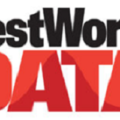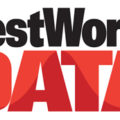Private: Maybe Some Engaging Team Exercises…
This is the third in a series of articles describing the dramatic advent of easily accessible behavioral and cognitive DATA into the business world.
Missed last week’s article? Click here to read it.
What is DATA? BestWork DATA measures how a person thinks, learns and behaves, based on hard-wired personality traits and cognitive abilities.
These do not effectively change with training, coaching or incentives. They are strengths and abilities that are never lost. By themselves, they are neither positive or negative. Their value depends entirely on what the person is trying to do. Certainly similarly sounding stories have echoed around the halls of HR for many years. The difference is that BestWork DATA combines the highest levels of accuracy and reliability with remarkable ease of use, requiring no special training or old profiling methodologies.
Cognitive and behavioral information is available for hundreds of jobs and virtually any business decision. These articles tell stories of how this DATA will radically change hiring, training and management, opening up extraordinary ways to unlock human potential.
“We have to learn to collaborate! And work together! Teamwork is essential,” proclaimed the CEO. No one challenged this. In fact, everyone already knew that teamwork was essential. Each member of this “team” fervently wanted to work together…if only the other members of the team would do so.
In Silicon Valley, nine out of ten startups fail. Half of those fail because smart, talented and highly passionate individuals cannot work together effectively.
Now is the point in the story where a consultant appears, suggesting “Maybe some engaging team building exercises…Perhaps we can trot out the old DISC or Myers-Briggs assessments. Those are always fun. And there is Strengths Finder, which is interesting, and everyone can learn their five top strengths and see how they match up with other members of the team. This is guaranteed to get a 4+ rating on the feedback sheets.”
It is important at this time to clearly define the objective of whatever exercise is chosen.
Is it a 4+ on the feedback sheets?
Is it to have a fun and interactive escape from the typical work day?
Or is it to establish effective and sustainable collaboration and communication within the enterprise?
BestWork DATA enables team engineering. The DATA maps the topology of the team. That is the behavioral foundation of the team that does not change. It is upon this foundation that any sustainable actions take place.
For example: A key group of 21 executives were charged with leading a series of critical changes in their company. These executives came from three different areas: financial, human resources and IT. The three groups had a history of poor collaboration, yet collaboration was essential to the challenges facing them.
When BestWork DATA was used to map the strengths of the group, it showed that two thirds of the group preferred to work alone, based on hard-wired personality traits. What this meant was that having a workshop on the importance of collaboration and putting the group through imaginative collaboration exercises was not really going to have any long-lasting effects on the behavior of two thirds of the group.
Their default behavior would inevitably carry the day when busy, under stress or essentially most of the time.
DATA revealed the underlying problem and DATA pointed to the solution.
If the members of the group could not be encouraged or taught to be collaborative, then a collaborative communication structure must be put into place. This means regular meetings between the members with the frequency based on the nature and criticality of the issues for which they were responsible. Other elements were checkpoints and communication
formats that provided key information into the overall group.
The non-collaborative members of the group would effectively be collaborating simply by participating in the various communication points.
This is team engineering. DATA enables the enterprise to engineer specific outcomes using the hard-wired strengths of the members, rather than hoping that training alone would produce the necessary results. The training is still important, but now it is applied to the real and tangible framework it needs.





